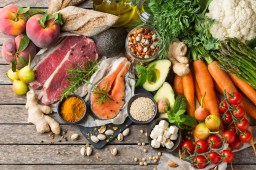Cooking with Spinach: How Different Methods Affect Its Nutritional Content
Spinach is a powerhouse of nutrients, rich in vitamins, minerals, and antioxidants. However, the way you cook spinach can significantly influence its nutritional profile. In this article, we will explore how various cooking methods affect the nutrition of spinach and help you maximize its health benefits.
Raw Spinach: A Nutrient-Dense Option
Eating spinach raw is one of the best ways to preserve its nutritional content. Raw spinach retains high levels of vitamin C, folate, and several phytonutrients that can be lost during cooking. Salads featuring fresh spinach provide a crunchy texture and bright flavor while delivering essential nutrients straight to your plate.

Steaming Spinach: A Gentle Cooking Method
Steaming is another excellent method for cooking spinach as it minimizes nutrient loss compared to boiling. This method retains many water-soluble vitamins like B vitamins and vitamin C while softening the leaves for easier digestion. Steam your spinach for just a few minutes until wilted to enjoy both improved taste and nutrition.
Sautéing Spinach: Quick Heat for Enhanced Absorption
Sautéing spinach in a small amount of olive oil or butter not only adds flavor but also enhances the absorption of fat-soluble vitamins like A, E, K, and carotenoids due to the presence of healthy fats. Quick sautéing also helps maintain some texture in the leaves while reducing oxalates that may inhibit mineral absorption.
Boiling Spinach: Nutritional Trade-offs
While boiling is one of the quickest cooking methods for preparing spinach, it can lead to significant nutrient loss—especially vitamins C and B9 (folate). The high temperatures break down these sensitive nutrients which leech into the water. If you opt to boil your spinach, consider using the water in soups or sauces to reclaim some lost nutrients.
Blanching Spinach: A Balanced Approach
Blanching involves briefly boiling spinach followed by immediate cooling in ice water. This method helps retain color and some nutrients while making it tender enough for salads or freezing without losing too much nutrition overall. It’s an effective way to prepare large batches if you’re looking at storing cooked greens.
In conclusion, how you cook your spinach greatly impacts its nutritional value. Whether you prefer it raw for maximum vitamin retention or sautéed with healthy fats for better absorption of certain nutrients, consider varying your preparation methods to enjoy all that this leafy green has to offer. Incorporating different techniques will keep your meals vibrant while reaping those health benefits.
This text was generated using a large language model, and select text has been reviewed and moderated for purposes such as readability.











